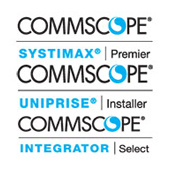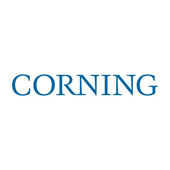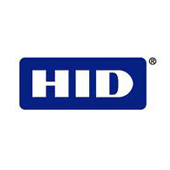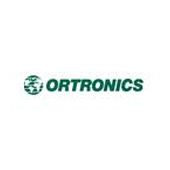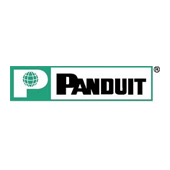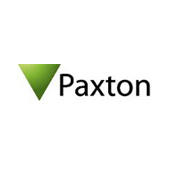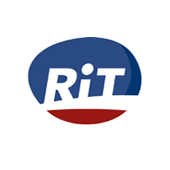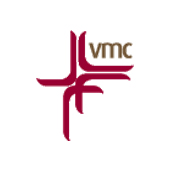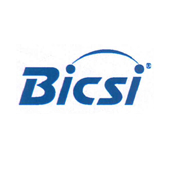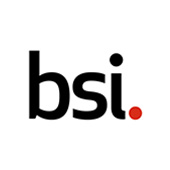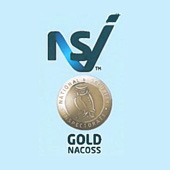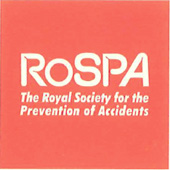Section 2(1) of the Health and Safety at Work etc Act 1974 states that it is the duty of every employer to ensure, so far as is reasonably practicable, the health, safety and welfare of all his employees. Section 2(3) of the Health and Safety at Work etc Act 1974 also requires each organisation to prepare and as often as may be appropriate, revise a written statement of general policy with respect to the health and safety at work of its employees.
The HASAW Act 1974 also requires that the organisation and arrangements in force for carrying out the policy are detailed within it and that the policy statement and any revisions of it are brought to the notice of all employees. This statement has been drafted in response to these requirements and covers the operations of LMG.
LMG will ensure that, in accordance with good practice and all relevant statutory provisions and so far as is reasonably practicable – their work is carried out in the safest possible manner, without risk to employees or others who may be affected by their activities. Line Management will seek to continually improving their performance in this respect and will incorporate this as a business objective that ranks equally with the provision of a quality service. The Directors of LMG accept both their collective and individual responsibilities for the health, safety and welfare at work of all its employees. We will ensure that, so far as is reasonably practicable:
• The provision of maintenance of plant and systems of work that are safe and without risk to health
• Arrangements for ensuring the safety and absence of risks to health in connection with the use, handling, storage and transport of articles and substances;
• Adequate competent resources are made available
• The provision of information, instruction, training and supervision as is necessary to achieve this objective;
• The safe access to and egress from any place of work under the employees control;
• That Health and Safety is never compromised for other objectives Managers and staff also have responsibilities for the implementation of this policy, ensuring that it is considered during the planning and execution of all work. It is the duty of each employee to exercise personal responsibility for his or her own safety and that of others.
LMG will ensure that employees are consulted on matters relating to health or safety in an appropriate manner and to encourage active participation in the prevention of accidents.
The duties of both employers and employees are detailed in law.
The Chief Executive Officer, Rick Marshall, has been appointed to have specific responsibility for this policy, its implementation, review and monitoring to ensure its effectiveness.
The Board has also appointed a health and safety co–ordinator – Peter Parr – who will assist us in meeting the requirements of specific provisions and advising us on health and safety matters generally. This statement is supported by our health and safety manual, which details the organisation, arrangements and the standards to be achieved in our operations. Specifically, it covers our arrangements in relation to the Management of Health and Safety at Work Regulations 1999 and the general risk assessments required by them. A copy of this manual is held on our intranet site and will be brought to the attention of all personnel, along with this Policy Statement and any revisions to it.
This statement will be displayed prominently at all of our premises and made available to other stakeholders – on request.
Rick Marshall – Chief Executive Officer LMG
1.1 ORGANISATION,MANAGEMENT AND RESPONSIBILITIES
1.1.1 Organisation Structure For Health and Safety
LMG’s Senior Management Team and Line Managers are responsible for taking action toensure thatan adequate standardof health, safety and welfare is achieved at all times.
This duty encompasses all aspects of LMG’s work which could affect employees,employees of other companiesandthe public. The healthand safety policysets outthe policy objectives of the Senior Management Team.
1.2 Management and Responsibilities
1.2.1 General All staff must ensure that they are aware of their own duties and responsibilities with respect to health and safety by complying with instructions issued by authorised staff and by pointingout apparent non–compliances. All staff are expected to advise senior staff of any deficiencies in the arrangements for their own health andsafety and that of others. The responsibilities of the staff and management are deliberately designed to overlap.This reflects the beliefthat the achievement of the policies of LMG requires cooperation at all levels. Listed below are the detailed responsibilities of those Line Management personnel who are specifically concerned with health andsafety matters.
1.2.2 Key Personnel It will be the responsibility ofall Directors to:
- Accept their individual role in providing leadership on the management of health and safety issues.
- Recognise personal responsibilities and liabilities under statutory requirements relating to occupational health and safety.
- Ensure that suitable arrangements have been made for the preparation and appropriate review of an adequate Policy.
- Read and understand this Policy and know the principal statutory requirements affecting it.
- Ensure that the decisions they make have due regard for health and safety and the objectives identified in the Policy.
- Ensure that the appropriate resources –including those relating to finance –are provided to meet the objectives, arrangements and standards identified in the Policy.
- Ensure that appropriate arrangements are in place to meet the standards set for the organisation in the Policy.The arrangements must include systems that plan, organise, control,monitor and review the preventive and protective measures.
- Administer the Policy throughout the organisation by appointing a person responsible for the co–ordinationand day–to–day running of its arrangements.
- Secure an environment where employees are consulted on matters relating to health and safety and are encouraged to become actively involved in the prevention of accidents –in line with the Policy.
- Undertake to keep informed of relevant health and safety management issues, failures within the organisation and the findings of any investigations.
- Undertake to review health and safety performance in areas of personal and collective responsibility to ensure that this Policy remains effective.
- Undertake to consult those appointed to provide health and safety assistance where clarification or assistance is required in the implementation of this Policy.
- Set a personal example –in line with the Policy –and seek to become involved in aspects of its administration as specified.
- Insist that sound working practices are observed –as laid down in the Policy.
- Sanction appropriate disciplinary procedures against any member of staff who fails to adequately carry out their health and safety responsibilities.
- It will be the responsibility of the Director (nominated as having specific responsibility for health and safety) to:
- Read and understand the Policy for health and safety and know the principal statutory requirements affecting it.
- Ensure that steps are taken to make sure that the Statement and Policy for health and safety is brought to the attention of all employees and that each person is aware of their individual responsibilities under it.
- Ensure that copies of the Policy are available on the premises and are made available for reference on request.
- Ensure that the health and safety programme is managed to maintain the standards set out in the Policy.
- Ensure that the Policy and assessments of work activities are reviewed and revised –when appropriate –and that all copies are updated.
- Ensure that health and safety factors are taken into account in the selection and placement of personnel and that employees are provided with the necessary information, instruction,training and supervision.
- Ensure that sound working practices are observed as laid down in the Company Policy and that work is planned and carried out in accordance with the statutory requirements.
- Ensure that all health and safety records are maintained in accordance with the Company Policy for health and safety.
- Arrange regular meetings with the other Directors –in accordance with the Company Policy –to discuss health and safety issues. Records are to be kept of all meetings and follow–up action.
- Reprimand any member of the staff failing to discharge satisfactorily their responsibilitiesfor health and safety.
- Set a personal example as regards health and safety issues.
- Undertake to consult those appointed to provide health and safety assistance in executing these duties and where clarification or assistance is required in relation to this Policy.
1.2.3 H&S Co–ordinator Regulation 7 of the Management of Health and Safety at Work Regulations 1999 requires the appointment of adequate numbers of ‘competent persons’ who are to assist the employer in complying with obligations under all health and safety legislation. Peter Parr, the Health and Safety Co–ordinator,has been appointed by the Company to perform this function.It will be his responsibility to:
- Advise on the preparation, promulgation and review of the risk assessments made under the Management of Health and Safety at Work Regulations1999, specific assessments made as required by other statutory requirements and the Policy for health and safety.
- Give advice to management(and others) as requested on:
- legal requirements affecting health, safety and welfare;
- prevention of injury and damage through safe systems of work and the introduction of appropriate control measures;
- provision,selection and use of protective clothing and equipment;
- new working methods, equipment or materials which could reduce risk;
- proposed changes in legislative requirements.
- Where appropriate liaise with the Enforcing Authorities on behalf of the Company.
- Report notifiable occurrences to the appropriate enforcing authority, in accordance with the requirements of the Policy and the Reporting of Injuries, Diseases and Dangerous Occurrences Regulations (RIDDOR) 1995.
- Carry out investigations of all accidents in accordance with managerial and Policy requirements–making appropriate recommendations for remedial action to prevent recurrence.
- Carry out inspections and audits at appropriate intervals to determine compliance withand adequacy of procedures.
- Provide adviceon health and safety training requirements.
- Generate and pursue health and safety initiatives and activities to support the development of this Policy.
- Lead in the establishment and maintenance of an effective safety management system.
- Promote the effective communication and dissemination of relevant information.
- Keep abreast of developments in health and safety legislation, guidance and best practice and advise accordingly on appropriate changes.
In addition to these duties,the Health and Safety Co–ordinator will also be responsible for ensuring standards are met in relation to health andsafety at the Head Officepremises. As such, it will be their responsibility to:
- Ensure that all office work equipment is safe and is fitted with necessary protective safeguards in accordance with the manufacturers recommendations and the requirements of the Company policy for health and safety.
- Ensure that all buildings, plant, machinery and equipment are subject to a programme of regular maintenance, inspection and test in accordance with the Policy and any other relevant standards.
- Ensure that premises are laid out to ensure appropriate standards of health and safety are met.
- Ensure the maintenance of fire prevention and fire precautions measures within the Company; the testing offire alarm and emergency lighting systems on a regular basis and the exercising of fire evacuation drills in accordance with the requirements of the specific fire risk assessment and fire certificate.
- Where appropriate, maintain statutory records and registers.
- Control the work of contractors on site in accordance with the requirements of the Company Policy.
- Ensure that statutory documentation and first–aid equipment is ordered and displayed where appropriate.
- Ensure that any hazards thatare reported are rectified immediately in accordance with the Company Policy for health and safety.
- Ensure that only competent persons are permitted to carry out repairs and modifications to work equipment.
In addition to these duties and – so far as is reasonably practicable – without detriment to other duties provide assistance and support in relation to health and safety aspects of any project when requested.
1.2.4 Managers and Team Leaders It will be the responsibility of all Managers and Team Leaders to:
- Accepttheir individual role in ensuring the health,safety and welfare of those persons under their control.
- Recognise personal responsibilities and liabilities under statutory requirements relating to occupational health and safety.
- Read and understand this policy and know the principal aspects of it affecting their areas of control.
- Ensure that the decisions they make have due regard for health and safety and the objectives identified in the Policy.
- Ensure that appropriate resources –including those relating to finance –are provided to meet the objectives, arrangements and standards identified in the Policy.
- Ensure that health and safety factors are taken into account in the selection and placement of personnel in their areas and that employees are provided with the necessary information, instruction, training and supervision –in–line with the Policy.
- Ensure that steps are taken to bring to the attention of all employees this policy (including the statement) and that each person is aware of their individual responsibilities under it.
- Ensure that employees under their control are informed and consulted about relevant health and safety issues to enable them to actively participate in the prevention of accidents.
- Ensure that risk assessments have been completed for the areas within their control and that work is planned in accordance with the arrangements and standards identified in this Policy and any specific risk assessments completed in relation to work under their control.
- Ensure that the procedures identified within the Policy are implemented to reduce risks arising out of activities in areas of their control.
- Insist that sound working practices are observed; that all registers, records and reports are in order; materials are delivered and stacked to avoid double handling; plant is safely positioned; hazardous materials are marked and used in accordance with specific risk assessments; and that electrical supplies are safely installed and maintained in accordance with the arrangements specified in this Policy.
- Ensure that good housekeeping practices are adopted within their areas of responsibility.
- Reprimand any memberof the staff failing to discharge satisfactorily their responsibilities set out in this policy and that appropriate personal protective equipment is worn where necessary.
- Ensure that all hazards or complaints notified to them are appropriately investigated and that any defects are dealt with as soon as possible –or adequate steps are taken to reduce any risk arising out of them.
- Ensure that site emergency arrangements are in order and that accidents are investigated and reported inaccordance with the Policy.
- Regularlymonitor site activities to ensure compliance withany site rules and the standards set out in this Policy.
- Undertake to consult those appointed to provide health andsafety assistancewhere clarification orassistance is requiredin the implementation of this Policy.
- Undertake to keep informedof relevanthealth and safety management issues or failures within theorganisation and the findings of any investigations.
- Set a personalexample –in line with the Policy –and seek to become involvedin aspectsof its administrationas specified.
1.2.5 Staff
It will be the responsibility of all staff to:
- Read and understand the Company Policy for health and safety and carry out work in accordance with its requirements.
- Comply with safe working procedures in accordance with any information,instruction, training and supervision provided by the Company.
- Use all equipment in accordance with any information,instruction,training or supervision provided by the Company.
- Ensure that they carry out no repair or modification of any work equipment, unless they have been trained and authorised to do so by the Company.
- Ensure that they are familiar with the arrangements that relate to obtaining first–aid and the procedures in the event of a fire, accident or other emergency.
- Report any defects or damage in work equipment, personal protective equipment or environment to their Manager.
- Report any accident, however minor, to their immediate Manager, Team Leader or appropriate first–aider.
- Ensure that clothing and particularly footwear worn is appropriate from a safety standpoint.
- Suggest ways of eliminating hazards and improving working methods.
- Obey instructions given by their Managers or others appointed to take charge (such as fire–wardens and first–aiders) in the case of emergencies.
- Warn new employees, particularly young people, of known hazards.
- Ensure that – where appropriate – they are aware of Clients or Principal Contractors arrangements for ensuring health and safety.
1.2.6 Contractors,Consultants,VisitorsandOthers Consultation will take place where appropriate in accordance with Section 2 of the Health and Safety At Work etc.Act 1974, the Managementof Health and Safety at Work Regulations 1999 and the Health and Safety (Consultation with Employees) Regulations1996.
- It is intended that an appropriate number of representatives for employee safety will be consulted on matters relating to health and safety.In particular, these matters will relate to the:
- introduction of any measure at the workplace that will substantially affect the health and safety of employees.
- arrangements for nominating competent persons under the requirements of the Management of Health and Safety at Work Regulations 1999.
- health and safety information to be provided to employees under statutory requirements.
- details relating to any health and safety training planned or organised.
- health and safety implications of the introduction of new technologies into the workplace.
- The Company will formally request that representatives are nominated to participate in the consultation process from each operational unit. For those representatives nominated, appropriate information,training and time will be provided to enable them to fulfil their obligations under the requirements.
- Formal consultation will normally be facilitated by means of staff and team meetings and will be included as an agenda item at each of these whenever held. This will provide the formal channel for communication and consultation on health and safety matters.
- Any views expressed in relation to any health and safety matter will be recorded and taken into account infuture decisions – after consultation with the Health and Safety Coordinator.
- In general, suggestions or comments on ways in which the health and safety programme can be improved will always be considered by the management team and should be directed –in the first instance –to the Health and Safety Coordinator.
These arrangements should be read in conjunction with LMG Site Procedures Manual for Sub–contracting Companies. The Company will plan, co–ordinate, control and monitor the activities of contract companies on their premises and sites, to effectively minimise the risks presented to employees, other persons and the public. In circumstances where contractors are carrying out ‘construction work’ for the Company, these arrangements must be read in conjunction with those provided under ‘Construction work completed under the CDM requirements’. The Operations Manager or a competent, named, Company individual will be appointed to co–ordinate each contract. They will be responsible for:
1.2.7 Selecting,co–ordinating and monitoring competent contractors The Company will only use contractors who have proved able to discharge their primary responsibility to safeguard their employees and other persons who may be affected by their undertakings. This will be administered in the form of an approved list of contractors that will describe the contractor capabilities and limitations. The list will be regularly reviewed and sanctions will be applied as a result of poor health and safety performance including written warnings, suspension, financial penalties and removal from the approved list. The following details will be used to evaluate the suitability of a contractor:
- Safety policy document.
- Understanding of general site rules and communication to all employees. Quality of information supplied on hazards, risks and controls.
- Standard of “method statement”.
- Application of national and European codes and standards.
- Condition of plant and equipment.
- Competence and attitude of employees.
- Induction and training of temporary workers and subcontractors.
- Effectiveness of contractor’s supervisory arrangements (this will depend on skills mix and complexity of the task).
1.3 Past health and safety performance. Where the Company appoints contractors to carry out ‘construction work’ under the requirements of CDM,further assessment may be required relating specifically to their competency and resources.The Company arrangements under ‘Construction work completedunder the CDM requirements’ must be referred to in these nstances. Producing proper specifications, exchanging necessary information and requesting method statements that deal with the health and safety issues. Contractors are to be given adequate information detailing the following:
- Any Company health and safety procedures that may affect them whilst on site.
- Any special health and safety hazards at their work location arising out of the Company activities.
- Arrangements for the segregation of work areas.
- The control of access to the premises; equipment to be used; hazardous activities –including any permits towork.
- Emergency procedures including the identity of those nominated to take charge in such an event.
- Arrangements made in relation to the provision of welfare and first–aid facilities.
The contractor will be required to carry out a risk assessment relating to the work to be undertaken and produce a method statement detailing the required health and safety procedure.The risk assessment and method statement must be submitted to the Company contact for approval, prior to commencement of the work. Maintaining regular effective two–way communications that accommodate changes and unforeseen problems promptly –including at least daily visits and out of normal hours communications. No deviation from the agreed method statement shall be permitted without prior approval from the Company contact. The person responsible for liaising with the contractor will undertake monitoring of the contractor’s performance during the work activities. They should quickly bring to the contractor’s attention any shortfalls in performance relating to health and safety matters and require the contractor to take the necessary remedial or corrective action Informing all staff who are likely to be affected by the work, of the nature and timing of the work activities. This will include any specific health and safety arrangements that need to be considered as a result of the work. Ensuring that any of the contractors/sub–contractors operatives working on the premises or sites have been made aware of the local health and safety rules and emergency procedures. Ensuring that appropriate records are maintained including:
- Contractor appraisals, questionnaires and other assessment records.
- Clear contracts, specifications and method statements supplied by contractors.
- Records of health and safetyinformation provided to contractors includingany particular rules.
- Minutes of pre–contract and formal meetings between the Company and the contractor.
- Accident and dangerous occurrence records.
- Copies of all permit to work forms.
- Monitoring and safety inspection records.
Ensure that on completionof the work any relevant documentation is obtained, that all equipment and material has been removed and that working areas have been left in a safe condition. Any damage to fixtures, fittings, floor surfaces etc. should be reported to the contractor and made good by them. All employees will be expected to report danger to their Manager or Team Leader, who will be expected to either:
- Stop the work if serious or imminent danger to persons or property other than the contractor’s employees is foreseen.
- Notify the individual responsible for co–ordinating the work by telephone or in writing –depending on the circumstances.
1.4 Visitors and Others The Company will plan, co–ordinate, control and monitor work activities to effectively minimise the risks presented to any visitor. Where possible –any special arrangements required by the visitor(s) must be determined before arrival by those whom they are visiting. This may extend to cover the bringing of vehicles; other machinery and/or substances into offices or onto site and the provision of facilities for disabled persons or those with language difficulties.
Upon arrival, all visitor(s) must complete required details in the appropriate site register or visitors’ book. Where local procedures apply at a Clients premises or on a construction site controlled by a Principal Contractor, these rules will take precedence. Visitors must sign out before leaving any site or Company premises and company property (including any visitor badge where issued) must be returned.
Visitors must be informed of the risks to which they may be exposed whilst on the premises or site and of the emergency arrangements –including the location of assembly points.
Where local procedures apply at a Clients premises or on a construction site controlled by a Principal Contractor, these rules will take precedence. Visitors must be informed of any applicable emergency procedures. Where an emergency arises during the visit, their host will ensure that visitors are accompanied to a place of safety and that they comply with any applicable procedures. Where visitors or employees encounter any problems, these should be reported to their Manager, Team Leader or the Health and Safety Co–ordinator immediately so that corrective action can be taken.
Adequate supervision must be maintained while the visitor is on site. This includes ensuring the safe handling, transport and use of any articles and substances and must be adequate to prevent the visitor from straying into hazardous areas or exposing themselves to danger.
Security arrangements must be adhered to when visitors enter any Company building or site. Where a visitor is required to enter an area where controlled access arrangements apply, access must be authorised and monitored by the responsible person.
Visitors will be required to use any personal protective equipment that is necessary to safe guard their health and safety. This will be issued at the time of the visit. Where visitors are involved in an accident whilst on Company premises or sites, they must be treated and the circumstances reported in accordance with this Policy.
Where an incident results in a visitor’s admittance to hospital, he or she must be accompanied by a responsible person. The Health and Safety Co–ordinator must keep records of follow–up action and any subsequent communication between the visitor and the company. All employees must seek approval from their Manager or Team Leader before arranging for a visitor to come onto site.
Employees must take responsibility for visitors in their care and should ensure that the requirements of this policy are adhered to at all times. Additional care and attention must be taken where children or disabled visitors enter the premises.
Children are not permitted on the premises without the express permission of the Health and Safety Co–ordinatoror his representative. A responsible person must accompany children at all times. A child is someone who is under the age of 16 years. CDM Regulations
The Company will plan, co–ordinate, control and monitor all site and installation activities to effectively minimiser the risks presented to employees, other persons and others who may be affected by our activities. For all site activities, the Operations Manager will –prior to the commencementof the work and in consultation with the Health and Safety Co–ordinator if appropriate –determine whether the work is subject to the requirements of the Construction (Design and Management) Regulations 2007–as amended (CDM). WhereCDM applies to the work and the Company is to carry it out under the control of a Principal Contractor,the Operations Manager will ensure that arrangements are in order to:
- co–operate with the Principal Contractor –so far as is necessary for reasons of health and safety;
- provide thePrincipal Contractor with any information (for example, a relevant part of a risk assessment or method statement) which might affect a person’s health and safety or justify a review of the health and safety plan;
- comply with any directions provided by the Principal Contractor and any rules contained in their health and safety plan;
- provide the Principal Contractor with any information they are required to notify under the Reporting of injuries, Diseases and Dangerous Occurrences Regulations 1985 (RIDDOR) and any other relevant information; and
- ensure that all employees are provided with the name of the Planning Supervisor, the Principal Contractor and the relevant contents ofthe health and safety plan.
Where CDM applies to the work and the Company is to carry it out as a Principal Contractor nominated by the Client,the Operations Manager will ensure –in consultation with the Health and Safety Co–ordinator if appropriate–that arrangements are in order to:
- prepare an adequate health and safety plan containing (until theend of the construction phase) information detailing the arrangements for ensuring the health and safety of those involved in the work and those whomay be affected by it and information regarding site welfare arrangements;
- establish co–operation between other contractors involved in the work;
- ensure that both contractors and employees comply with any rules in the health and safety plan;
- ensure that only authorised persons are allowed into any area where the work is being carried out;
- ensure that the details contained in the notification of project is displayed in a readable condition and in a position where it can be readily seen by any person working on the project;
- provide relevant information to the Planning Supervisor for inclusion in the health and safety file;
- give reasonable directions to contractors, including any rules for the management of the work detailed in the health and safety plan;
- ensure that every contractor working on a project is provided with comprehensible information on the health and safety risks arising from the work;
- ensure that every contractor involved in the project provides information relating to risk assessments and any subsequent health and safety training provided by them;
- ensure that all employees and the self–employed working on a project are able to discuss and offer advice on matters connected with the project where their health and safety may be affected; and
- co–ordinate the views of all employees (or their representatives) at work on project where necessary for reason of health and safety.







